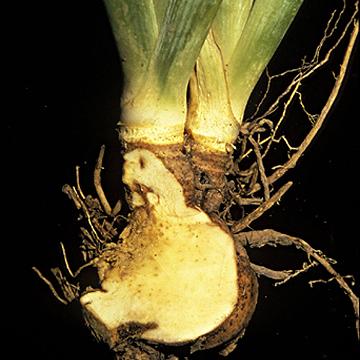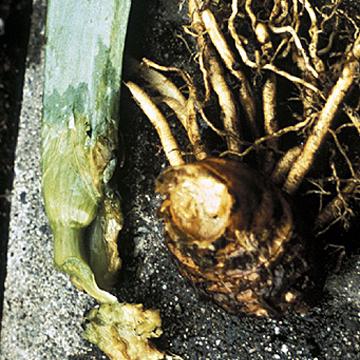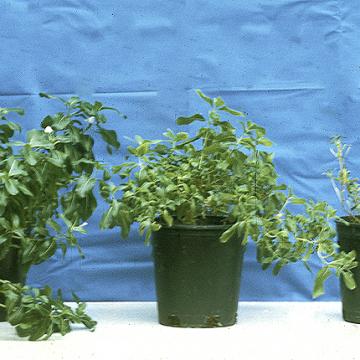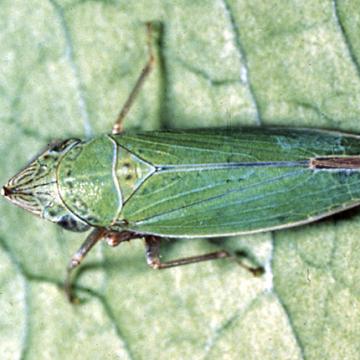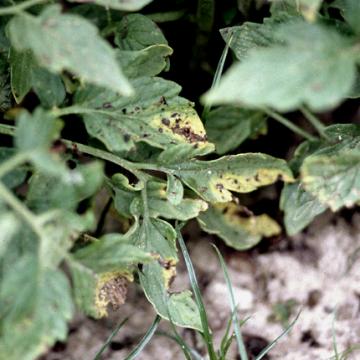DISEASE: Bacterial stem and rhizome rot
HOST: Iris
Iris stem and rhizome with brown, discolored, rotted portions.
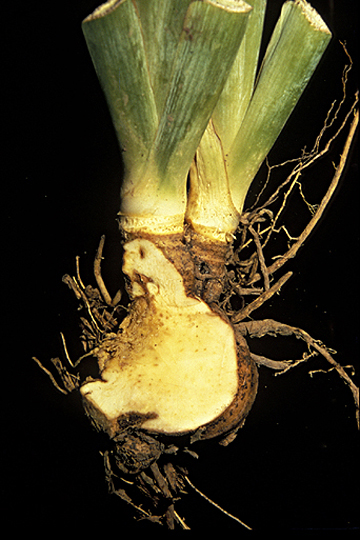
Bacterial stem and rhizome rot | Iris
DISEASE: Bacterial stem and rhizome rot
HOST: Iris (Iris sp.)
PATHOGEN: Burkholderia gladioli pv. gladioli
PATHOGEN SYNONYM: Pseudomonas gladioli pv. gladioli
SOURCE: R. Raabe
DISEASE: Bacterial stem and rhizome rot
HOST: Iris
Mushy rot of stems and rhizomes are characteristic of advanced stage of the disease.
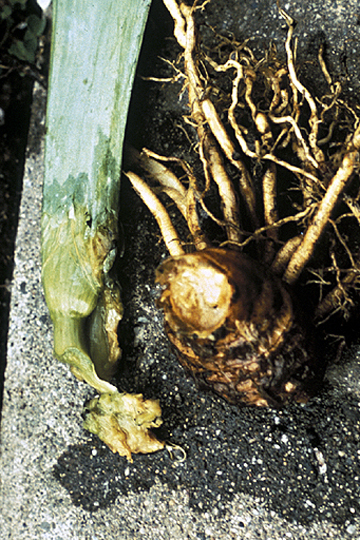
Bacterial stem and rhizome rot | Iris
DISEASE: Bacterial stem and rhizome rot
HOST: Iris (Iris sp.)
PATHOGEN: Burkholderia gladioli pv. gladioli
PATHOGEN SYNONYM: Pseudomonas gladioli pv. gladioli
SOURCE: R. Raabe
DISEASE: Periwinkle wilt
HOST: Periwinkle
Infected plants with stunting and sparse foliage (center and right).
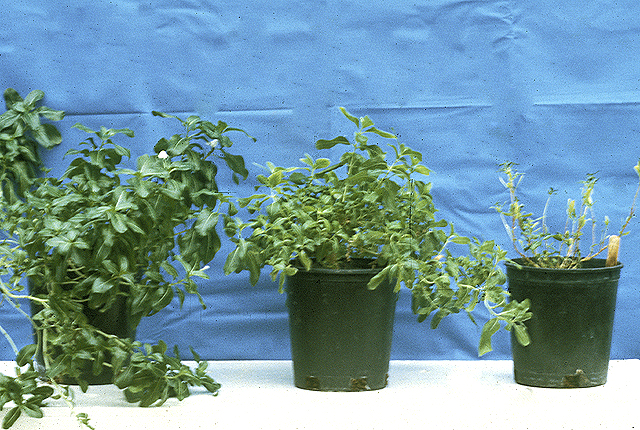
Periwinkle wilt | Periwinkle
DISEASE: Periwinkle wilt
HOST: Periwinkle (Vinca sp.)
PATHOGEN: Xylella fastidiosa
SOURCE: R. McCoy, M. Davis
DISEASE: Periwinkle wilt
HOST: Periwinkle
Draeculacephala minerva, leafhopper vector of Xylella fastidiosa on plants such as periwinkle and watercress.
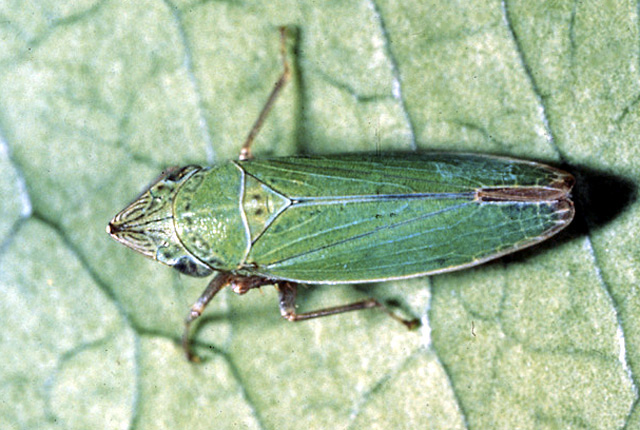
Periwinkle wilt | Periwinkle
DISEASE: Periwinkle wilt
HOST: Periwinkle (Vinca sp.)
PATHOGEN: Xylella fastidiosa
SOURCE: J. Clark, A. Purcell, M. Davis
DISEASE: Syringae leaf spot
HOST: Tomato
Leaves with brown necrotic lesions and chlorotic margins. Symptoms vary greatly among cultivars. Some have black or brown lesions with bright yellow, chlorotic areas and others do not have yellowing.
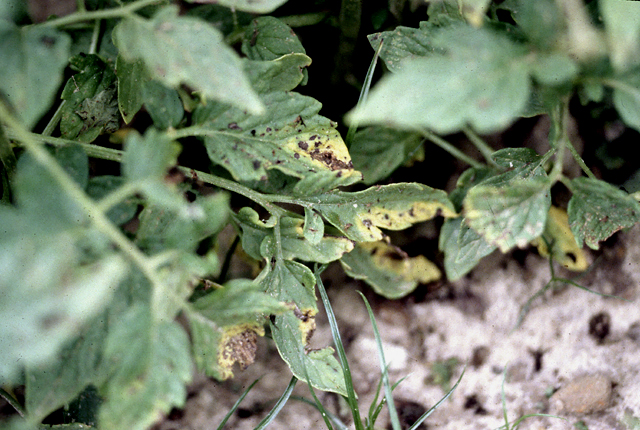
Syringae leaf spot | Tomato
DISEASE: Syringae leaf spot
HOST: Tomato (Lycopersicon esculentum)
PATHOGEN: Pseudomonas syringae pv. syringae
SOURCE: R. Gitaitis


